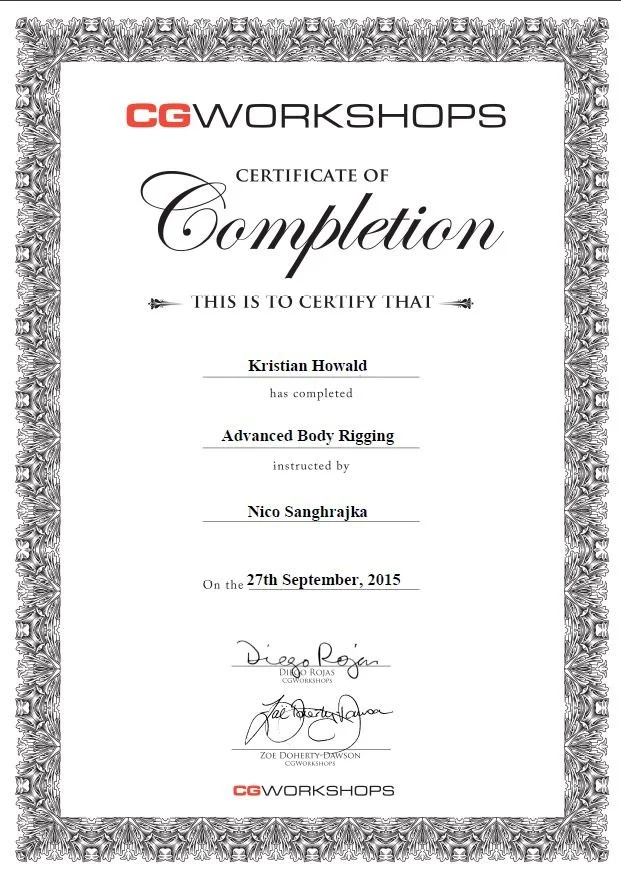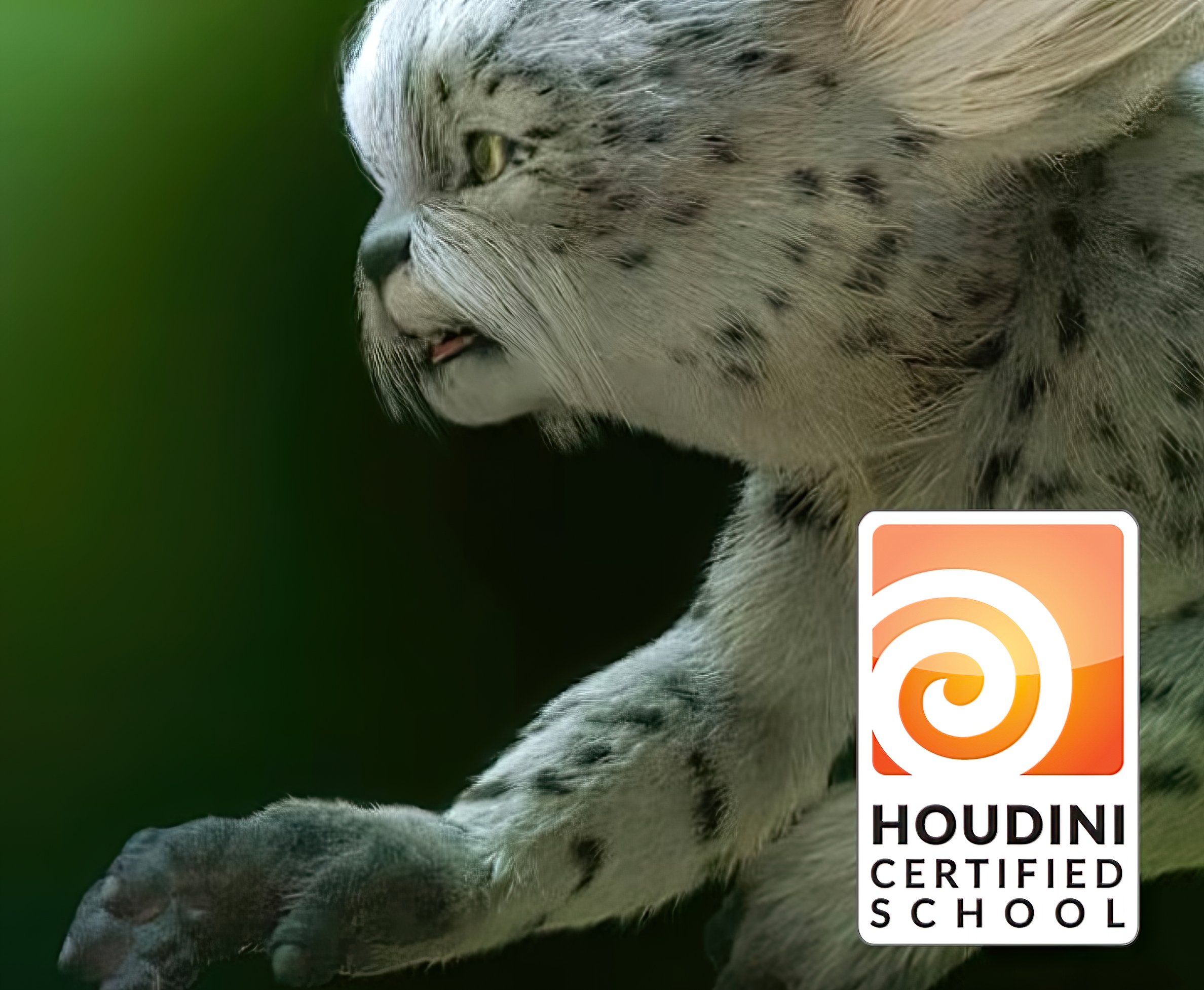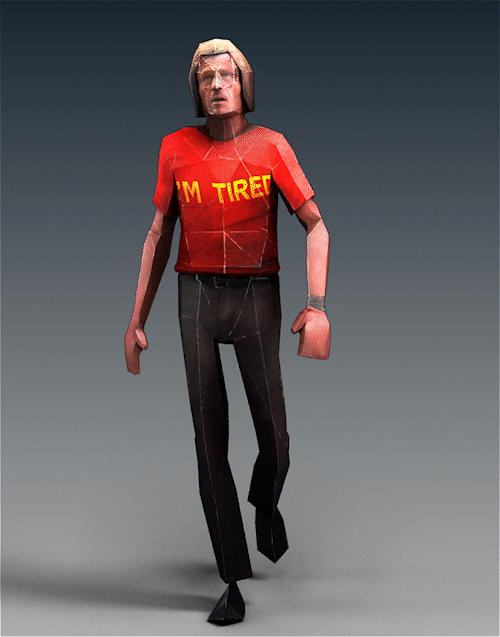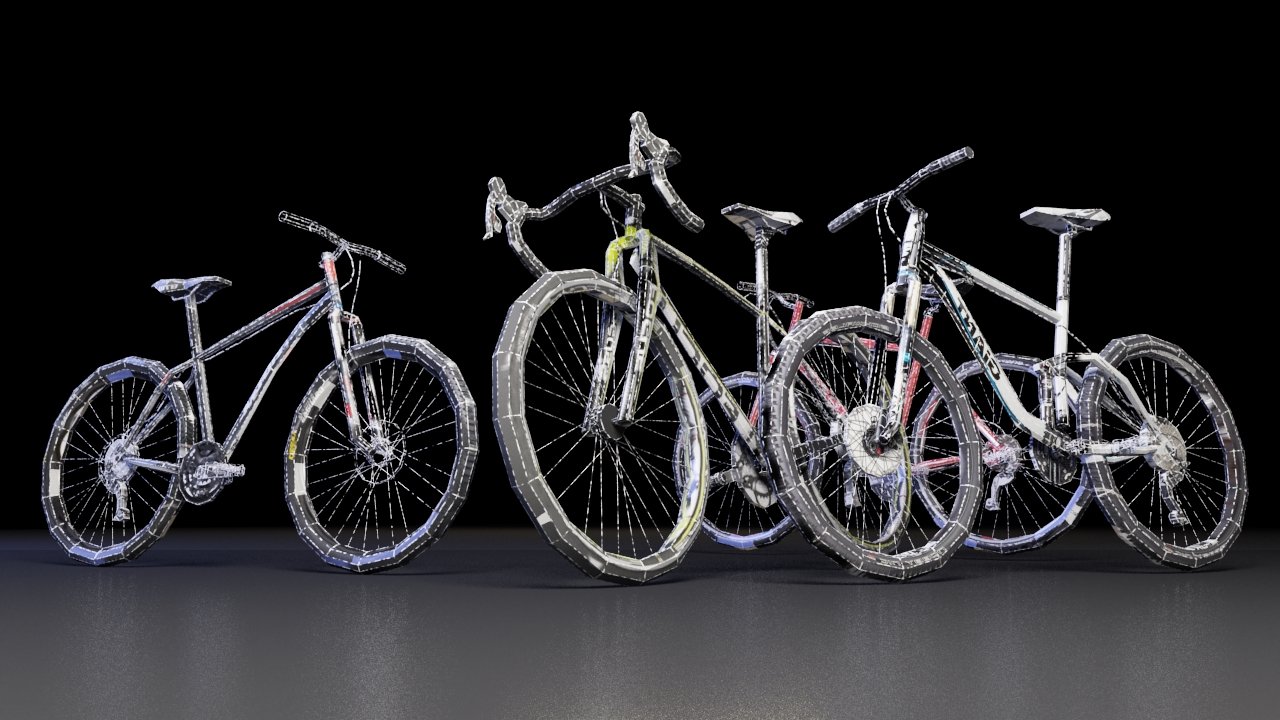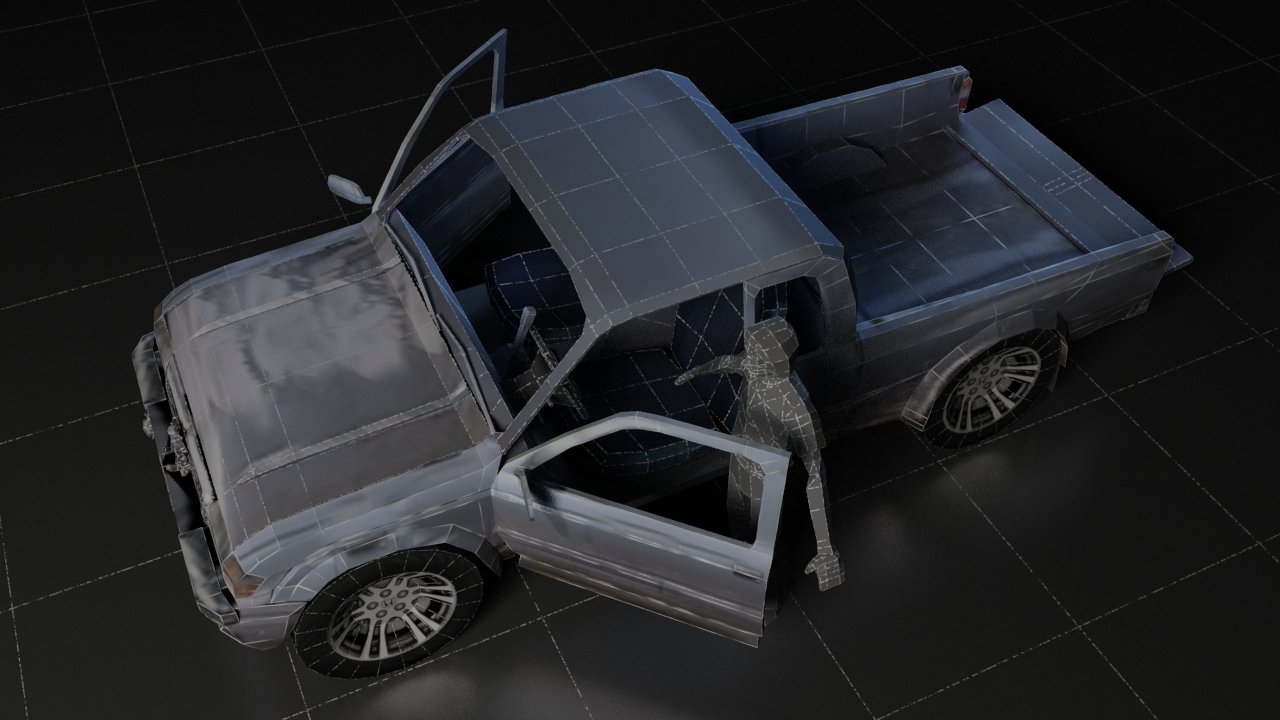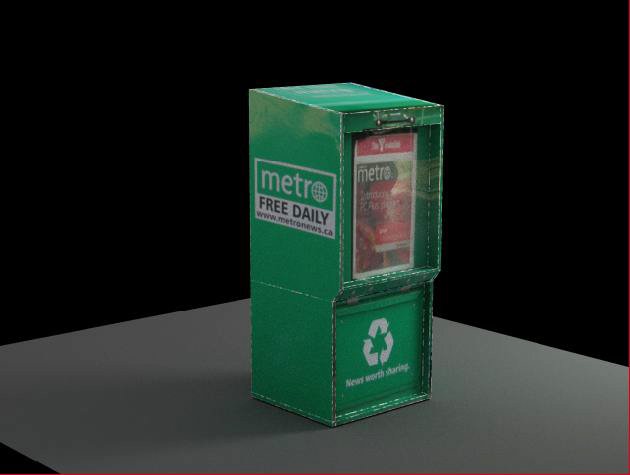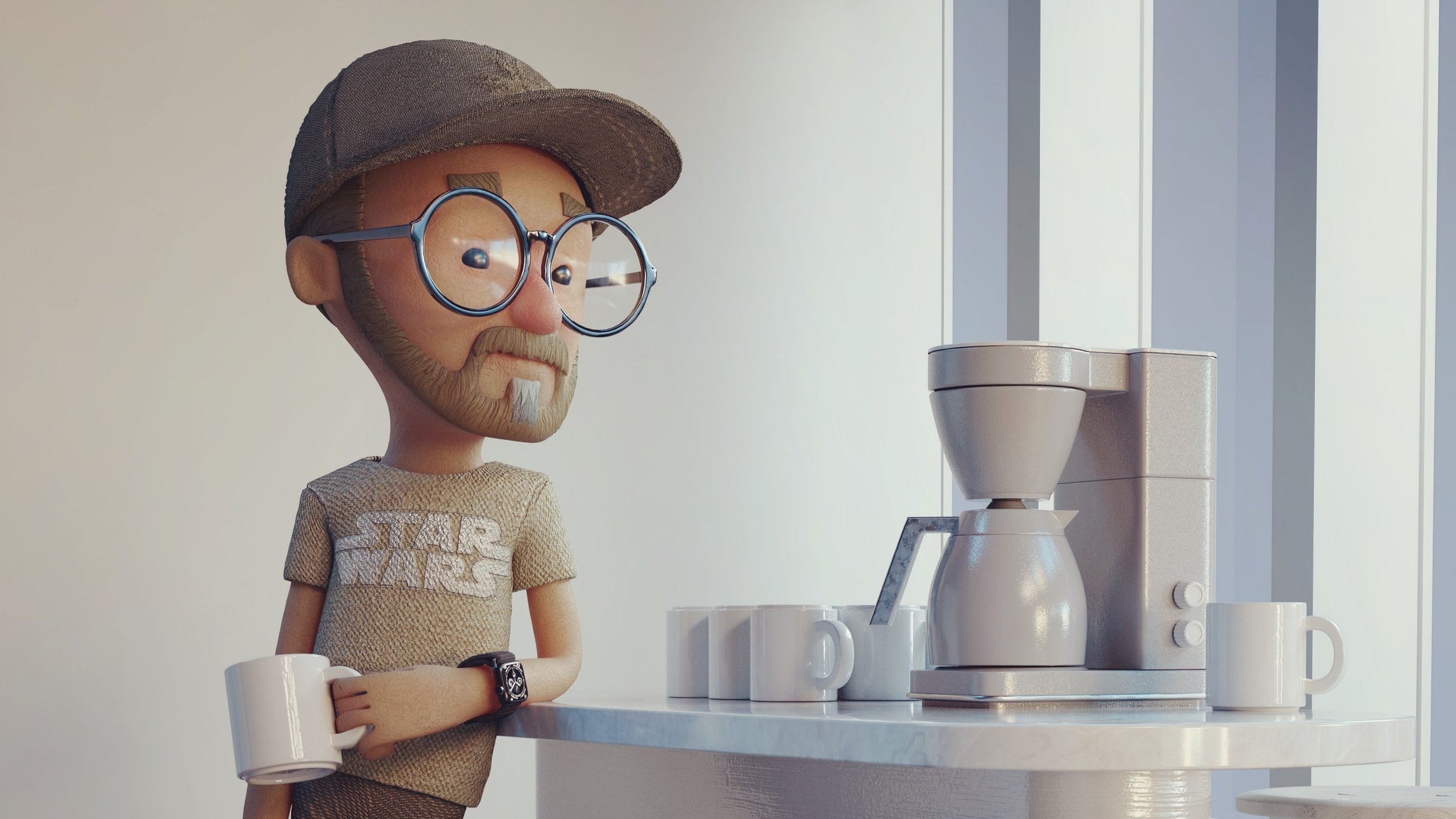
“The opportunity to meet new people continuously inspires me.”
Philosophy of Facilitation
I strive to create a positive, energetic, creative learning environment that promotes curiosity. I simplify complex and abstract theories to make them easy to understand, equipping students with the tools they need to achieve their technical and creative goals. My approach ensures they are prepared to produce work that exceeds their expectations.
From their first day of class to their last, I guide students by clearly explaining timelines, rubrics, and due dates. I take pride in being available and offering personalized help throughout the year, whether through in-class interactions, office hours, pop-up drop-in sessions, or chat and video conferencing on apps like Microsoft Teams. I strive to leave no student behind, going above and beyond to ensure their success. However, their willingness to do the required work ultimately determines their achievements. My role is to support and guide them, but their dedication and effort are crucial for their success.
My students come from diverse cultural backgrounds, contributing to an imagination engine that produces varied projects with rich visual and written narratives. This diversity fosters vibrant discussions and collaborations, creating community and shared learning. Meeting new people continuously inspires me, driving my creativity and innovation in the classroom and fueling my growth as an educator and digital artist.
I am committed to diversity and cultural intelligence. I help students cultivate a healthy work ethic, respect for peers, problem-solving capabilities, and curiosity. After leaving the program, these values and skills are essential for their personal and professional success. By fostering an environment that encourages collaboration and resilience, I ensure that students are well-prepared for the challenges and opportunities in their professional lives.
Student success is a cornerstone of my teaching philosophy. In 10 months, students transition from having no experience with industry-standard software to creating animated films. I emphasize solid and soft skills such as teamwork, selflessness, and a positive attitude, ensuring they are well-prepared for the challenges and opportunities in their professional lives.
This award for Empathy was a welcomed surprise, from the 2019 Taiwan International Student Design Competition.
Mentorship
“Kris is a highly respected professor/mentor who always helps his students excel. He humbly shares his well-organized and well-structured materials for the class lectures with colleagues to boost the prep work, allowing a smooth transition and quality lectures even if the curriculum changes. He also willingly takes suggestions from peers to make the curriculum better for students’ learning outcomes. It had been my pleasure to team up with Kris and teach students together.”
— Seunghoon "Tony" Yeom, Instructor, Animation Design
“Kris is a creative genius with exceptional art skills and technical knowledge in the CG industry, all the way from pre-production to post-production. I have worked alongside Kris for close to 3 years now. He not only excels at delivering high-quality education, but he also keeps up with new tools and software, as I’ve seen. Also, as a former student of Kris’s, I have firsthand knowledge of his extraordinary teaching methods, which have helped me throughout my time as a student and beyond. Kris’s experience, ambition, and optimistic attitude are often a source of encouragement for students and other professors. I have only optimistic predictions for his career trajectory. See less”
— Dhruv Joshi, Former Instructor, Animation Methodology 1 and 2
I take great pride in serving as a mentor to both students and colleagues. As a mentor, I aim to provide a supportive environment where students can receive guidance and advice on various aspects of their education, including technical skills, personal growth, career development, and more. I also believe in mentoring my peers, and I was fortunate to have had this type of guidance when I first joined Sheridan College in 2002. At that time, I was surrounded by experienced instructors who provided me with the necessary tools and resources to succeed in the classroom. Now, I strive to pay it forward by offering new department members the same level of support and guidance.
In addition, I recognize the importance of promoting equality and diversity in education and the workplace. Creating a diverse and inclusive environment can help foster creativity, encourage personal growth, and build stronger relationships. I strive to be an ally for all students, colleagues, and communities and to promote equal opportunities and representation in the education and creative industries.
The graduating class of 2019
Forward-Looking
To stay up to date, I’m constantly looking over articles, attending workshops, and talking with colleagues from the industry to get a sense of what’s new and how these advances can be incorporated into future studies. In 2015, I advanced my rigging skills by taking a workshop by Nico Sanghrajka. Nico was a Rigging Supervisor at Atomic Fiction, responsible for the CG double of Deadpool and has worked in leadership roles at many top-tier studios (MPC, Dreamworks, ILM, etc.). This informative session inspired new techniques I incorporated into my classes in the following years. I automated the rigging process through MEL scripts in 2019. Students who wanted to focus on animation could breeze past the more complicated technical workflows of setting up a character. A colleague, Steve Sayer, took these scripts and refined them with his mastery of coding the following year. My rigging approach's functionality is also included in a “Sheridan Rigging Toolkit” developed by Dennis Turner.
Students always comment on how much they learn in the short time we have them. On several occasions (pretty much every year), some have even suggested they’ve learned more in our 8-months than in their entire 4-year undergraduate programs. This is possible because of my constant look to the future, varied delivery methods, knowledge of the subject matter, and positive attitude towards problem-solving. There are different approaches I’ve developed and adapted over the years to help students manage all of the information that is directed their way.
-
Description text goes hereThis has become commonplace in every classroom (particularly throughout the Pandemic). However, it’s something I implemented very early in my teaching career, where student volunteers set up a tripod and video camera to record my class sessions. Having access to my archived content allowed students to follow along in class without worrying about missing necessary steps or procedures because they could always refer back to the recordings afterwards.
-
Description text goes hereThe ability for students to access information quickly is paramount in this program. Before social media existed (or Slate), and there weren't a lot of online resources for communication and discussion; so I developed my own. I had set up a mini, flash-based website that had helpful tips, interactive hotkey information, and other useful Maya tips. I later implemented a dedicated wiki/forum-based website for posting coarse material, notes, useful links, but more importantly, it gave students a space to ask questions outside of the classroom in an open discussion format. The Computer Animation Program moved to more modern solutions the make these types of communication more accessible (Slate, Slack, Shotgun, and now Teams).
-
When I was at the Dingle International Animation Festival in 2018, I had a chat with a professor at Gobelins. She had talked about their renowned animation program, but what caught my attention was the animation review tool they used called Syncsketch. It is a web-based tool, developed by ex-Pixar technicians specifically for the animation industry. It gives teams the ability to do draw-overs and annotations in real-time. I tested it out on a small scale through a personal account with the Digital Creature class in 2019. When the pandemic broke out and we had to set up remotely Shotgun (our previous collaborative tool) proved to be sluggish and not up to the task. Luckily I was able to have Syncsketch implemented across all three programs.
-
I tend to go overboard when it comes to helping students outside of the classroom. One thing I have found particularly useful is creating tailor-made movies that answer specific questions that might not have a searchable answer online. This could be any topic or concept that comes up that poses a challenge to students on a yearly basis. This growing library of information has saved me a lot of time when similar questions arise, I can simply share the link to an easily accessible answer.
-
Another thing I find that contributes to a unique course is to offer new experiences each year. All of the examples I use for demonstrations are freshly designed and developed for each school year. Not recycling the same content year after year allows me to research, experiment with new tools and approaches, stay current, and most importantly, give the students a bespoke experience.
Since 2006, I’ve been responsible for most software advances in the Computer Animation program. Some of these initiatives have been adopted by other programs in the years following, such as Vray, which is currently used in the BAA Animation program. I hope we can continue to make these investments in exploring new technology, as it gives the students more breadth and creates equitable access to the technology they might not be able to explore otherwise.
-
Joe Alter developed this hair plug-in at ILM. I introduced it to familiarize students with the grooming process. It also gave students options for adding complexity to their scenes, like grass (or any other object that could be instanced along the hair strands). Unfortunately, Shave couldn’t keep up with the Maya releases, and we had to abandon it almost ten years ago. We still haven’t found a hair option that is as student-friendly as this product.
-
Before Mudbox, everything was modelled by pushing and pulling points on NURBS or Polygon geometry. This software (and Zbrush) changed the game by allowing artists to sculpt their models in 3D space, but not just basic forms and details into the millions of polygons. Once the models were completed, you could also use them for texture. We decided to go with Mudbox over Zbrush because it supported our Alumni, Tibor Madjar, who had been on the development team at Weta. Also, I didn’t feel Zbrush was ready for use in the classroom at that particular moment. text goes here
-
When I went to the New Orleans SIGGRAPH in 2009, Chaos Group presented how its render engine would be integrated into Maya. It was quite a departure from the traditional renderers of the time, like Maya’s Software Renderer or Mental Ray. It was the first physically based render I was aware of at the time that calculated global illumination (light bounces). I was away on parental leave in 2010 but began adapting Vray in 2011. I always like getting daring students who aren't afraid to try something new to volunteer to test novel software. Mitch Counsell, now a Tactics Supervisor at Disney, was one of the first students to use it, rendering his final film “Symbiosis.”
-
Even though we had initially supported our Alumni with an earlier move to Mudbox, Zbrush had made some significant advances. By 2012, Zbrush 4r5 had been released with some impressive retopology tools. I had been experimenting with the workflow to create some early proof of concept models for the not-yet-developed Digital Creature Program. Eventually, I began giving workshops on Zbrush to the second-year Digital Character students, and by 2019, I officially incorporated it into the Computer Animation curriculum. Now, with our new 10-month CA program, Zbrush will be the main focus of the 2nd term.
-
I had talked with industry friends years earlier. They mentioned a move to Redshift for production at Guru Studios because it was much faster than a traditional render. Redshift utilizes the GPU, like a videogame engine, and can render multiple times faster than a conventional render. Because our student renders took longer and longer each year (sometimes as long as an hour per frame), I suggested this would be an excellent opportunity to test it out. Redshift was used on two student projects in 2017; we haven't looked back.
-
Adobe recently purchased this software not so long ago, and it’s one of the most student-friendly ways of texturing characters, props, and environments. It’s also heavily used in the industry, which is a bonus. This has increased the quality of student work across the board.
-
Traditionally, when texturing, every object received its material, with several textures applied to it, giving it a specific look and feel. WETA developed a unique workflow that utilizes UV tiles to allow multiple objects of various materiality to share one material. This approach eliminates tedious, time-consuming shader setup and frees up the student’s time to work on other aspects of production.
-
I introduced Midjourney as a tool to springboard the ideation process by generating initial concepts for various projects. The introduction of artificial intelligence is a remarkable new direction shift in the industry. It will be interesting to see how this is adapted. It’s following a predictable pattern, where traditional arts are resistant to (almost aggressively so) its proliferation. Other advances also saw similar anti-movements: photography, film, 3D animation, digital arts, motion capture, photogrammetry, VR, AR, etc.
Houdini Certification
Image from Evelyn Liu’s Capstone (2019)
I found the education portal about six years ago at the SideFX website. There was a listing of all of the certified schools in North America. I was shocked that Sheridan was omitted, mainly since Visual Effects and the newer Digital Creature have been using Houdini for at least a decade. This prompted me to contact SideFX, which got the ball rolling on becoming a certified institution. The application process is a yearly affair, which I've been doing since 2018. This involves creating an ensemble of student work that goes before a jury. Sheridan is now added to the list. We get a badge that can be used in promotional information. Our graduating Digital Creature and VFX students get free professional versions of Houdini for a year. I’m attaching the links to each of the submissions.
Thankfully, we secured some funding to switch out the music in 2023:)
2018 - https://vimeo.com/281419380
2019 - https://vimeo.com/354271635
2020 - https://vimeo.com/436107359
2021 - https://vimeo.com/575484253
2022 - https://vimeo.com/730109641
2023 - https://vimeo.com/844280210
SideFX has chosen one of my Digital Creature students (Chia-Hua Chiang) sculptures as part of their 2022 Houdini Hive Educational Summit advertising campaign.
Development
I have actively contributed to the advancement of animation education and curriculum design, with notable achievements including:
Honours Bachelor of 3D Animation and Emerging Technologies: Spearheaded the design and development of Canada’s first undergraduate degree in this field. Focused on integrating emerging technologies such as VR/AR, procedural workflows, and AI to ensure alignment with industry demands. Successfully guided the program through the PEQAB site visit, achieving approval in January 2025. Apparently it’s the most successful site visit in Sheridan History.
IADT Computer Animation Masters: Collaborated on the creation of a joint master’s program between Sheridan College and IADT in Dublin, Ireland. This program allows students to earn a master’s degree within 15 weeks of completing their Computer Animation certificate. Played a key role in aligning curricula despite differing academic structures, ensuring the program’s successful launch.
10-Month Computer Animation Program Redesign: Led the comprehensive restructuring of the Computer Animation Program to better align with industry requirements and enhance student learning outcomes. This redesign provided students with more focused time to refine their skills and improved alignment with other programs in the certificate cluster.
Transition to Virtual Delivery: During the COVID-19 pandemic, adapted core courses for online learning while maintaining high academic standards and student engagement.
Program Reviews 2012/2018 I contributed to the last two program reviews for computer animation. These reflective assessments are an integral component of progressing our certificate programs.
Internal Projects
Game Level Design. In 2011, Angela Stukador, Lukasz Wawrzyniak, and Kevin Forest approached me to create a variety of content to promote the upcoming Game Design Certificate programs and use them in the classroom. These were used as the core assets for the program's first few years.
Design - I was given the basic premise for the game and had the freedom to design the main characters, bad guy aliens, and environment tiles.
Modelling and Rigging - The Astronaut, Robot, and aliens were then modelled. I kept the models relatively low resolution because there was talk of creating a 3D game using the same assets at some point.
Animation and Sprites—I animated a variety of cycles for each character, including runs, walks, jumps, shooting, and dramatic death sequences.
Marketing - In 2011, I developed promotional material that included content for print and media. These were used to promote the course at events like SIGGRAPH. Another aspect involved collaborating with the Sheridan Production House, where I designed and implemented the CG component for a video where the primary actor receives his certificate for graduating from the games program, at which time he transforms into a video game character. I have to admit this was a challenging balancing act because it was being developed during my regular school year.
“Kenk,” NFB Visual Investigation - Kenk was an exciting project that I could bring in during the summer of 2013. The project was directed by Craig Small (http://thejuggernaut.ca/#proj_KENKTeaserTrailer ) and based on the best-selling graphic novel about the notorious bicycle thief Igor Kenk. Craig had previously been on the Oscar-winning team that created the beautiful Madame Tuti-Puti (https://www.youtube.com/watch?v=GGyLP6R4HTE ). I had worked with Craig as a lead animator at SpinVFX earlier in my career. Craig was an Inferno operator (which was an extremely expensive, compositing software/hardware solution back in the day ). I created the initial CG treatment inspired by papercraft objects, which helped secure NFB funding for creative development. A small group of co-op students and I used unoccupied space in the lab to investigate the visua style for animated vignettes interspersed throughout the short film.
This unique production, a collaboration with Sheridan students, was featured in a Sheridan Arts blog post highlighting the groundbreaking animation techniques and the enthusiastic teamwork that defined the project.
The gallery below has some of the work we produced that summer.
“Traces of Joy,” Short Film - This production used our lab facilities over the summer of 2011 (https://www.youtube.com/watch?v=DpsyKhIlZjE&t=2s ). It was directed by two of our past grads Jeff Tran and Louis Yeum (Louis was one of my previous students), and it received grants from the Toronto Arts Council and the Canada Council for the Arts. The story centered around two young inner-city girls and their chalk drawings. During the production, I provided guidance and helped with any technical challenges. I also did one uncredited shot for the trailer, which Jeff liked so much he added it to the very beginning of the film.
“True Family Story,” Short Film - This was a fun project by a fellow faculty member, Chris Walsh (https://vimeo.com/104186394 ). In 2009, Chris approached me to help with some of the more effects-based shots. I supervised a co-op student, Carla Veldman, and devised methodologies and approaches to create the look Chris was after.



